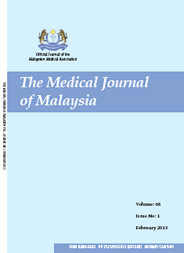MJM, Vol 70 Supplement 1 September 2015
Community empowerment to support NCD prevention in
a middle-income country
*Public Health Division, Faculty of Medicine Gadjah Mada University, Yogyakarta, Indonesia, **Epidemiology and Global Health, Department of Public Health and Clinical Medicine, Umeå University, Umeå, Sweden, ***Umeå Center for Global Health Research, Umeå University, Umeå, Sweden, ****Center for Health and Nutrition Research Laboratory, Faculty of Medicine, Gadjah Mada University, Yogyakarta, Indonesia, *****Umeå Center for Gender Studies, Umeå University, Umeå, Sweden, ****** Ageing and Living Conditions, CPS, Umeå University, Umeå, Sweden
ABSTRACT
Introduction: NCD is burdening low- and middle-income countries including Indonesia. Many studies show that NCD is related to unhealthy behaviours, which is related to personal choice. Community empowerment accommodate what people choice could be an opportunity to encourage people to make a healthy behaviour choice. The aim is to report the experience of piloting a community empowerment program to prevent NCD called PRORIVA (Program to Reduce Cardiovascular Disease Risk Factors in Yogyakarta, Indonesia).
Methods: A quasi-experimental study, involving four intervention communities, and one control community was applied. A community empowerment program was performed through phases: 1) building trust, 2) raising awareness, 3) program development, 4) community organizing and 5) initiation of maintenance. Every phase was performed through intensive interaction started from the local leaders, cadres, community activist, and lay people. Community capacities were identified and mobilised during the intervention. Smoking habit, physical activity, fruit and vegetable intake, knowledge and attitude toward CVD risk factors were measured before and after the intervention among sample (n=883 in intervention areas, n=114 in control area). The written meeting records, facilitator reports, free-listing and in-depth interviews were analysed to describe people perceived towards PRORIVA.
Results: There are more activities and more participation in low SES communities than in high SES communities (40 and 13 activities respectively). Men of high SES communities had their knowledge towards CVD risk factors increased significantly (from 56% to 70%). Citizen from both high and low SES communities perceived PRORIVA as improving the awareness of CVD, encouraged them for more healthy behaviour with a cheerful program.
Conclusions: A careful process inviting community participation is important to mobilize the community capacities. Community empowerment is a potential approach to improve community participation, program acceptance, people's knowledge and support the NCD prevention.
